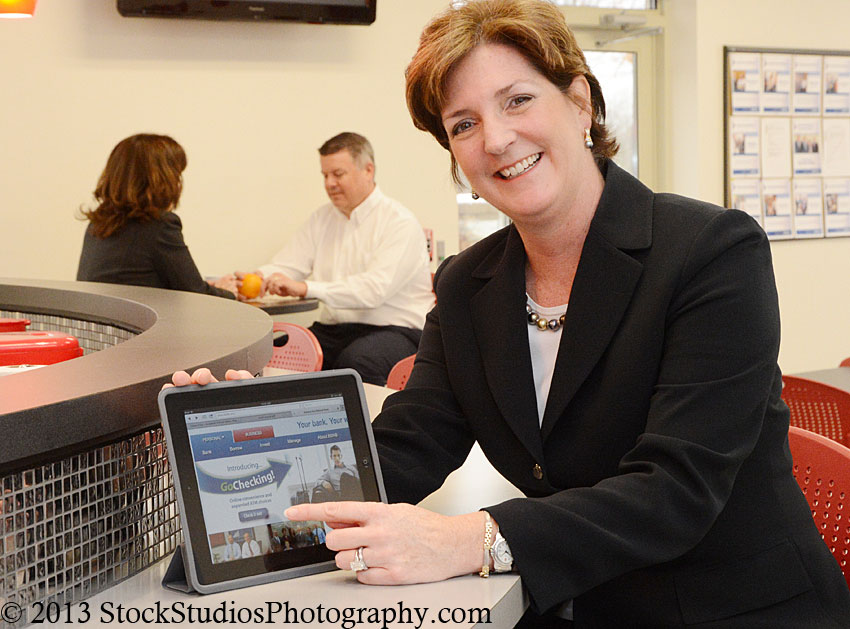
By R.J. DeLuke
Smartphone technology has been advancing rapidly, pushing the devices into the forefront as the wave of the future for many activities. People surf the Internet, watch their stocks, check e-mail, get sports scores, get on Facebook, have GPS navigation systems and much more from the palm of their hands.
They even answer phone calls.
Smartphones are taking on functions that are crucial daily activities and businesses are having to keep up.
These days, “people are much more apt to notice that their smartphone is gone than their wallet,” said David Brown, senior vice president and chief operating officer at Adirondack Trust Co. in Saratoga Springs. “The smartphone is the appliance of choice for just about everything and banking is no different.”
Banks in the region are ramping up to provide the technology so people can do banking from their phones. Nationally, experts say it’s a trend that is going to continue to grow.
“We are seeing it as a trend,” said Peggy de Koning, executive vice president and chief banking officer with Ballston Spa National Bank. She noted about 40 percent of the bank’s customers do online banking, which is primarily people on laptops and PCs. The smartphone program, launched about a year ago, started slowly, she said, but over the last six months there has been strong growth.
David DeMarco, president and CEO of Saratoga National Bank, said “the business has changed dramatically with the advent of electronic banking.”
Electronic banking isn’t necessarily mobile banking. From a laptop or PC, customers can go to a bank’s website, enter the proper information, including password, and then see their accounts, view history, and on some systems even transfer funds. That has grown in popularity as most banks have established that service in recent years.
At Ballston Spa National Bank, about 40 percent of its customers utilize that service, according to de Koning.
She said her bank has rolled out a GoChecking program for mobile banking aimed at trying to meet the needs of customers wherever they may be.
“Convenience is something the customers are looking for,” she said. “From our perspective, we want to supply them with the best customer service. They tie this (mobile banking) in with good customer service.”
Brown said Adirondack Trust’s website is workable on a smartphone. Customers can check balances, view the account history, see copies of checks and transfer funds. The bank is looking into providing a smartphone application–commonly called “app”–that will be more suited for phones. That is still in development.
What Adirondack Trust does have, he said, is a remote check deposit product. After installing the necessary application on a smartphone, It allows a customer to take a picture of a check, front and back, and submit it electronically with some basic information. The check is processed and recorded as a deposit.
“It’s a very popular service,” he said, noting that 1,600 customers have enrolled and about 1,500 deposits a month are being processed that way. It’s increasing at a rate of about 40 to 50 new people enrolling each month, Brown noted.
“It’s very easy to use. A lot of people like the convenience of being able to deposit a check without going to the bank,” said Brown.
A small businessman might be on the road doing business, return home at night and find checks in the mail, Brown cited as an example. He can sit down and use the mobile deposit on the spot, “without having to worry about getting up in the morning and go to the bank.”
DeMarco said Saratoga National Bank is rolling out a new mobile banking program later this year. When that comes, it will be in the form of an application that will allow people to do their banking on a smartphone the way they can now on a laptop, with similar ease. Presently, smartphones can access the ban website, but the screen isn’t designed for a phone and it can be cumbersome to negotiate on some phones.
Currently, one of the features for mobile banking is a program whereby get balances sent by text message, and also get alerted via texting when there is activity on the customer’s debit card, DeMarco explained.
He said he hasn’t seen a huge rush for those services as yet, but he is aware that it will be on the rise. DeMarco said the banking industry “is moving very quickly with the technology.”
“Through marketing in the region and through our technology associations, we keep track of what’s going to happening the future and what’s happening now,” said de Koning. Mobile baking isn’t just a fad, she said, “it is here to stay and continues to grow.”
“A smartphone is becoming almost indispensable for a majority of people in the country,” said Brown. “At some point, a smartphone will be used in place of a credit card or debit card to conduct transactions at point-of-sale.”
“They don’t have one that is the standard yet, but it will be coming,” he said. In stores, cash-out registers “will accept credit and debit plastic cards, but they will also interface with phones. That’s the next evolution. It will be a technology that is going to satisfy requirements and tie into existing systems to clear the process.”
